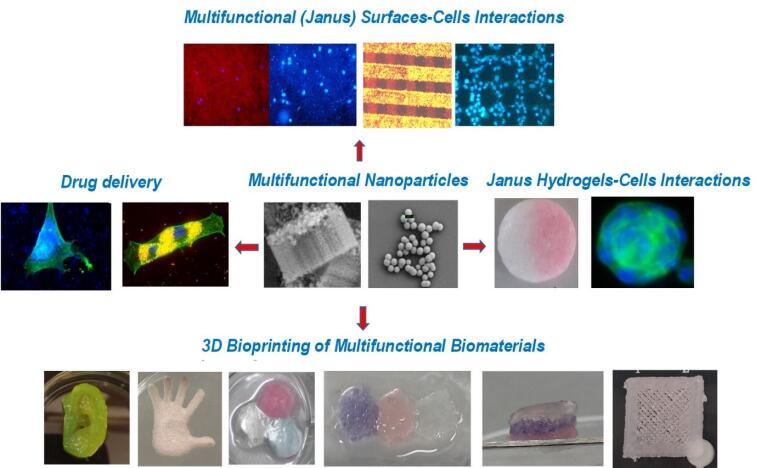Functional Nanobiomaterials, local drug delivery, 3D bioprinting
In biotechnology, biomaterials with nanoscale organizations are of high interest as artificial materials for tissue engineering applications to mimic natural extracellular matrix (ECM) and to study cell-materials interactions. Such nanobiomaterials can be generated by assembly of nanoparticles (NPs) on surfaces [self-assembled monolayers (SAMs) of NPs] or by the incorporation of e.g. inorganic (porous) NPs with organic polymers [nanocomposite (NC) hydrogels of NPs]. Furthermore, advanced biotechnological approaches often use nanoscale topography together with suitable surface functionalization to influence cell functions such as proliferation, viability, differentiation, cell-cell communication, cell morphology and tissue formation.
In this field our research activities are based on the syntheses and spatial controlled functionalizations of porous nanoparticles, preparation of their self-assembled monolayers (SAMs) and nanocomposite (NC) hydrogels as 2D and 3D biomaterials for biotechnological applications (e.g. cell-material interactions, local drug delivery) and 3D bioprinting of complex multifunctional 3D tissue constructs.


